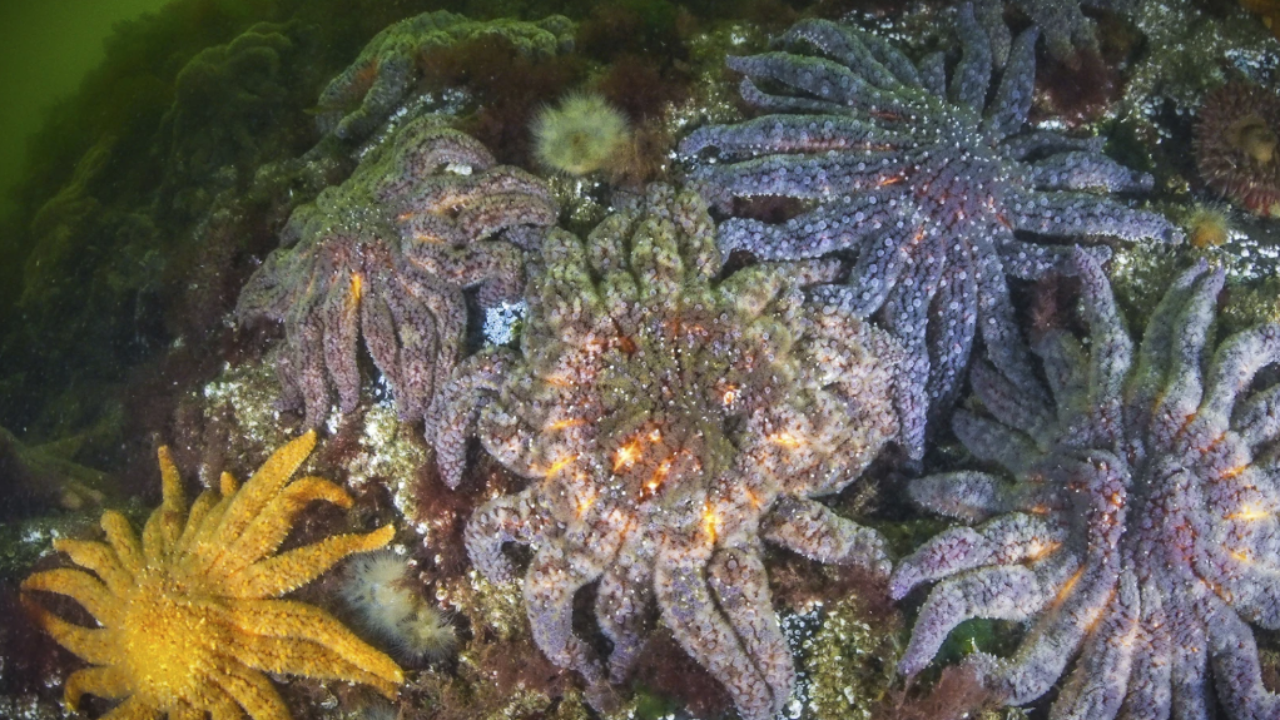
©(Grant Callegari/Hakai Institute via AP)
Pre-reading questions:
- If you could explore the ocean, what animals or plants would you like to see?
- What do you think might happen to the ocean if one important animal suddenly disappeared?
Vocabulary:
- stretch /strech/
- shellfish /SHEL-fish/
- investigation /in-ves-ti-GEY-shuhn/
- breakthrough /BREYK-throo/
- immunity /ih-MYOO-ni-tee/
[verb] – to extend or reach over a certain distance or period of time
The desert stretched from the northern border to the southern coastline.
[noun] – small sea animals with shells, such as crabs, shrimp, oysters, or clams, that are eaten as food
Many people are allergic to shellfish and must avoid eating them.
[noun] – the process of carefully examining facts to find the truth about something
An investigation showed that the power outage was caused by damaged cables.
[noun] – an important discovery or achievement after a long period of trying
The scientist made a breakthrough in developing clean energy technology.
[noun] – the ability of the body to resist or fight off a disease
Vaccines can help the body build immunity to certain viruses.
Article reading:
The breakthrough came when researchers studied coelomic fluid, a liquid surrounding the organs of living sea stars, which revealed the bacterial source. Earlier studies only examined dead sea stars, which no longer contained this fluid. Experts say the next step is to check if some sea stars have natural immunity and if treatments such as probiotics can improve resistance. Plans may include moving healthy sea stars or breeding them in captivity for later release. Restoring sea star numbers is critical for Pacific ecosystems, as they control sea urchin populations. Without them, sea urchins have multiplied and destroyed about 95% of Northern California’s kelp forests, which are home to many marine animals.
Comprehension questions
- What did scientists discover was responsible for killing sea stars?
- How long did the epidemic of sea star deaths last?
- Which species of sea star lost about 90% of its population?
- What does sea star wasting disease do to sea stars?
- What might scientists do to help healthy sea stars?
Discussion questions
- Have you ever seen a sea star at the beach or in an aquarium? If so, what did it look like? If not, would you like to see one in real life? Why or why not?
- Have you ever joined or seen a project to protect sea animals or nature? If yes, what was the project about? If not, what kind of project would you like to join?
- Do you agree that healthy sea stars should be moved to safer places?
- Why do you think it is difficult to study diseases in sea animals?
- What can people do to help protect sea animals and their homes in the ocean?